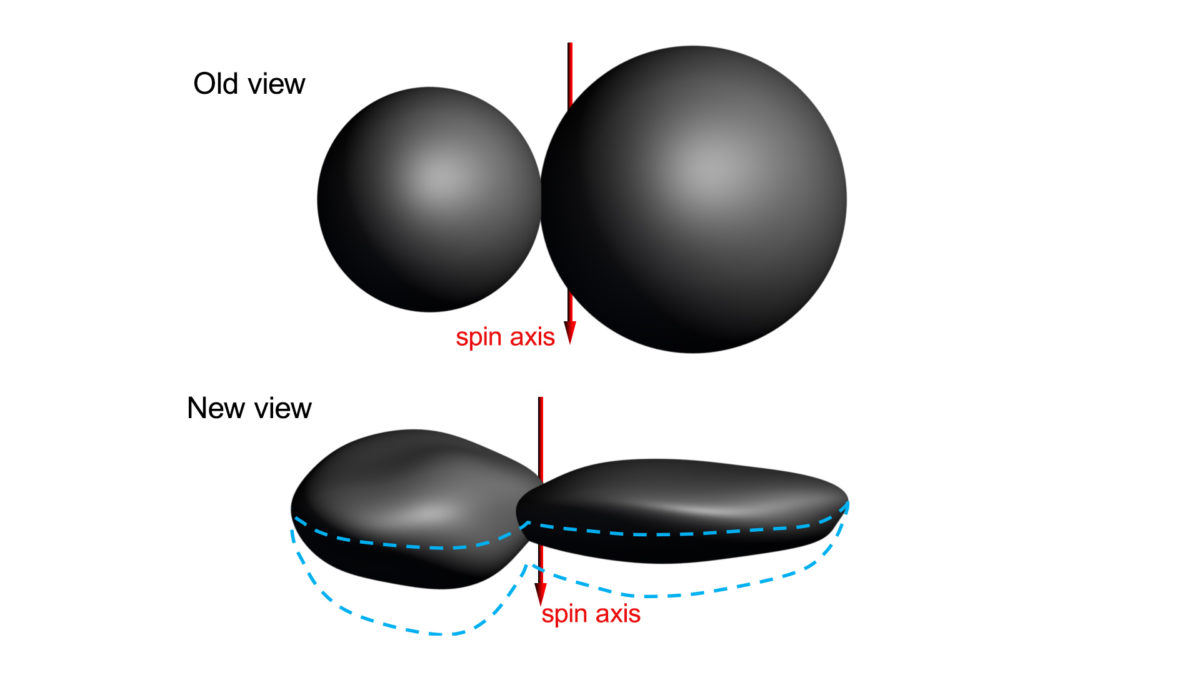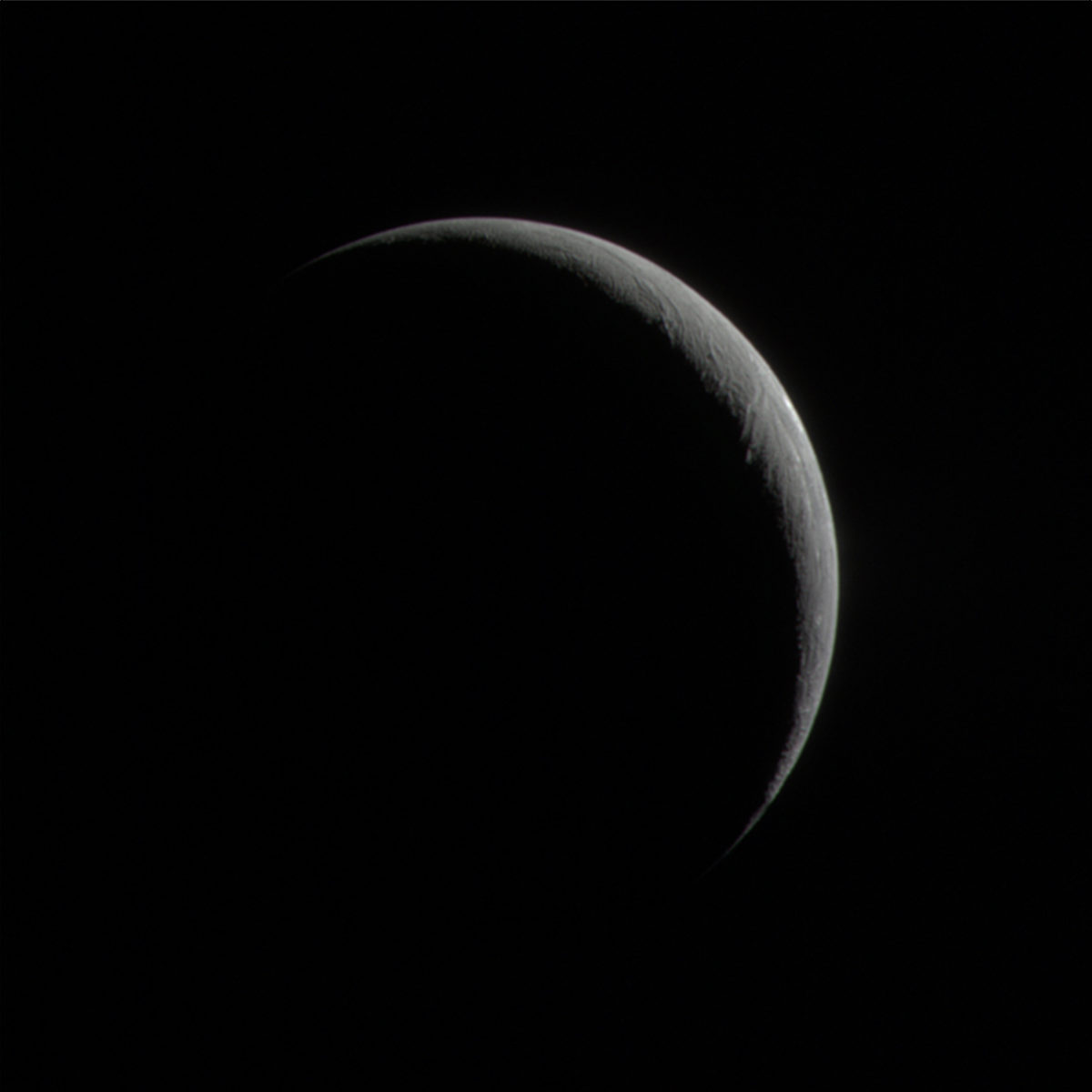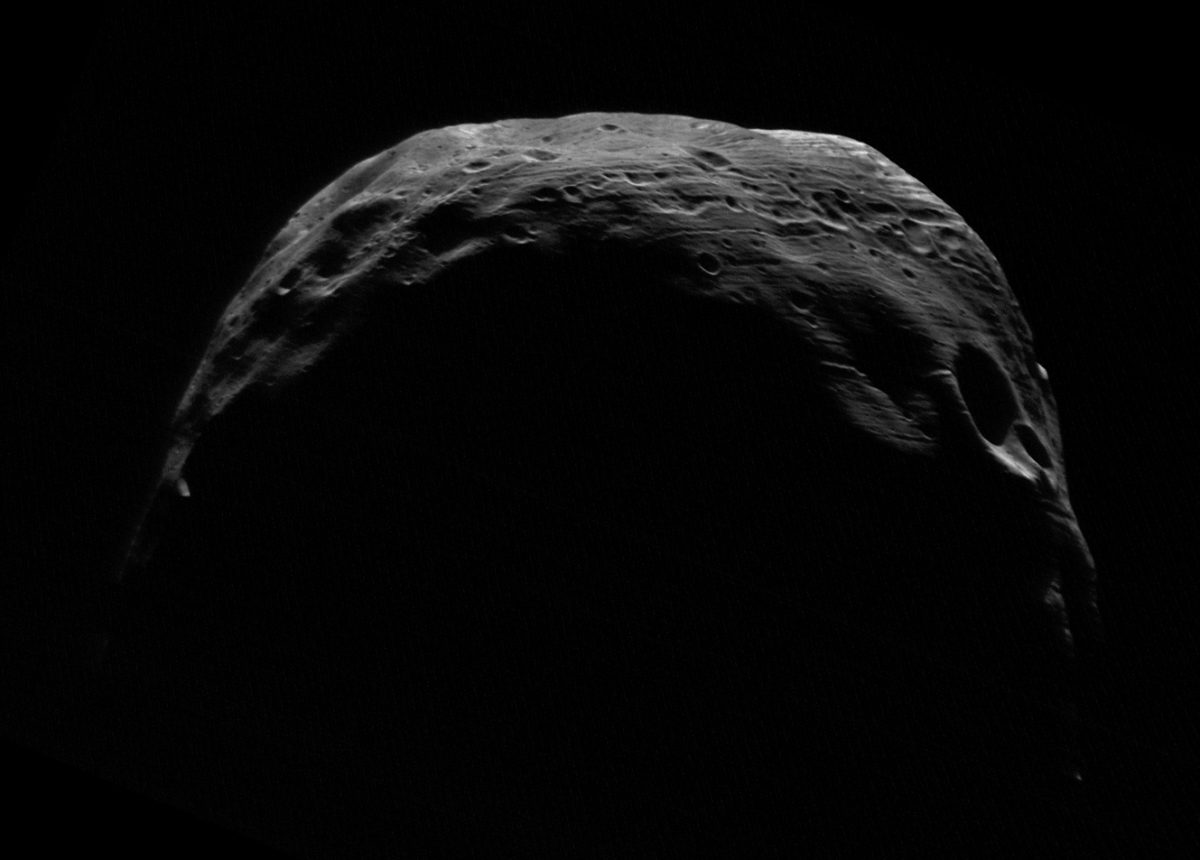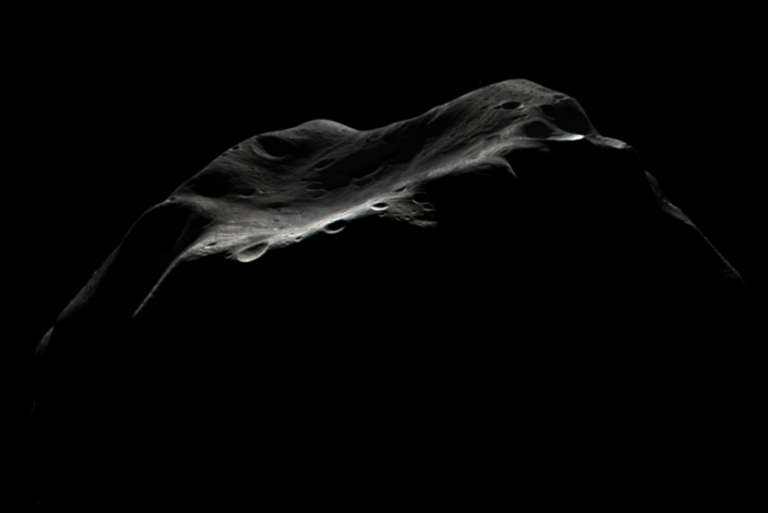Emily Lakdawalla • Feb 08, 2019
Looking Back at MU69
Hamburger Patty-Shaped World
The New Horizons team released this stunning crescent view of 2014 MU69 today. I love crescent views so much. They mean so much. You have to be farther from the Sun than a place in order to get a crescent view. New Horizons did it; it's beyond this distant solar system world, as it's beyond so many others.

This photo was from an observation that shows MU69 moving against background stars. That observation has revealed something remarkable and confusing and amazing: MU69's shape isn't that of a snowman, it's flat, like two hamburger patties smushed together. (Yes, "smush" is a technical term.) Who ordered this?? Nobody, that's who.

This is just bonkers, and is going to be, I think, the major scientific accomplishment of the MU69 flyby. Geophysicists did not predict this. Back to the drawing board! Isn't that fun?
You can read more about the discovery and observations at the New Horizons website, but I want to take the rest of this post to enjoy other weird-shaped space crescents.
New Horizons has taken a couple of other good ones. Here's a crescent Nix. Not many pixels, but a funky looking crescent!

Or how about this crescent Io? Io has a hat. (It's actually not a hat, it's a fiery fountain of lava. Do not touch Io's hat.)

Here's a cool crescent Ceres from Dawn. I love how the extreme lighting really shows that Ceres is on the edge of being a lumpy, not round, world.

Let's contrast that with a photo of Enceladus. Enceladus is half the diameter of Ceres and so much smoother! I love the specular (mirror-like) reflection off the edge at upper right. Smooth as ice. Smooth and ice.

Let's see, where else can we go? How about some lumpy worlds. Here's a crescent Phobos.

How about crescent Hyperion?

Here's a crescent Lutetia (this is one of two asteroids Rosetta visited on the way to Churyumov-Gerasimenko).

Speaking of Rosetta, here's comet 67P. Comets have a slightly different way of doing the crescent thing.

Especially when we smack them really hard, intentionally.

I hope you've enjoyed all these lookback views! There are a lot more in our image library!


 Explore Worlds
Explore Worlds Find Life
Find Life Defend Earth
Defend Earth

